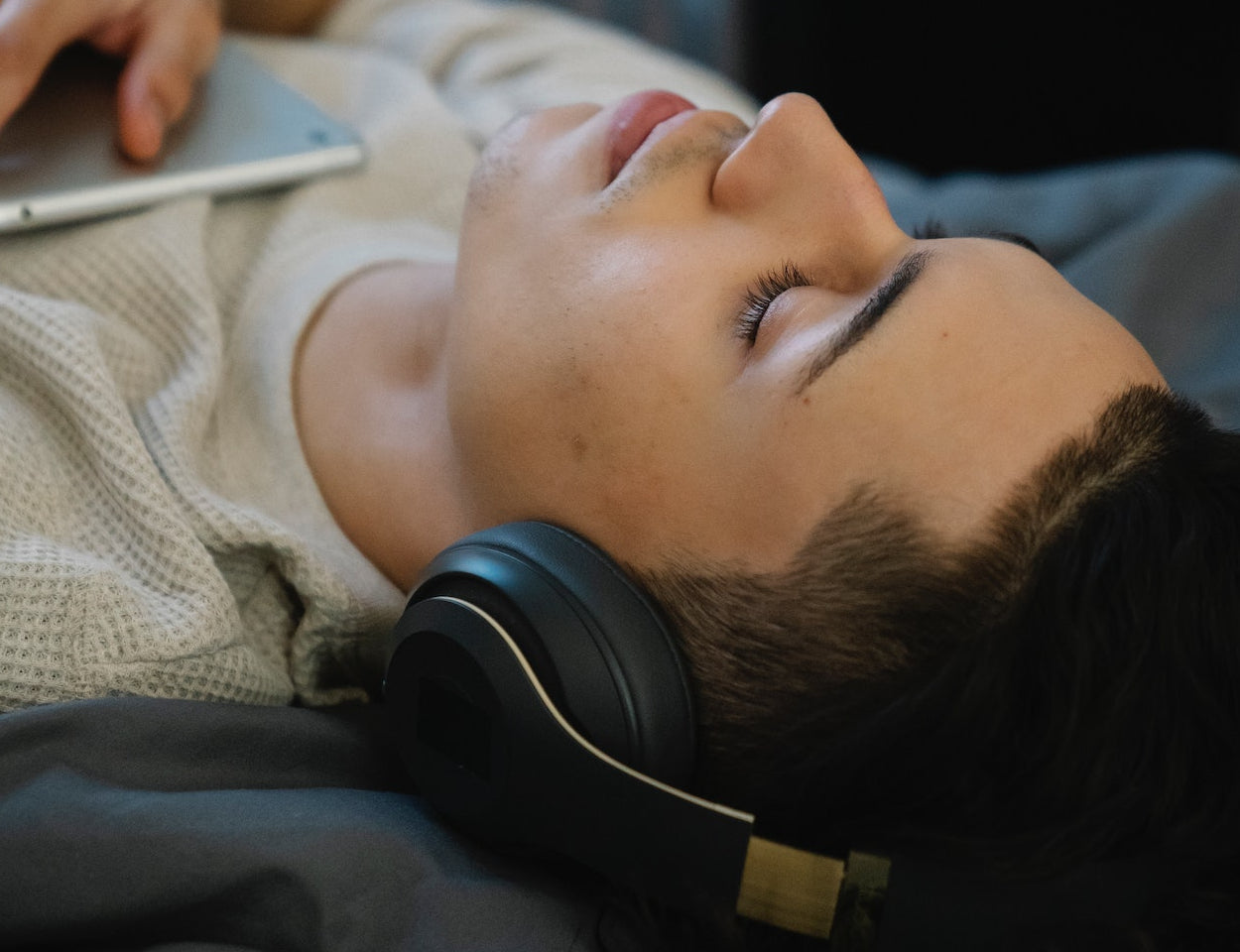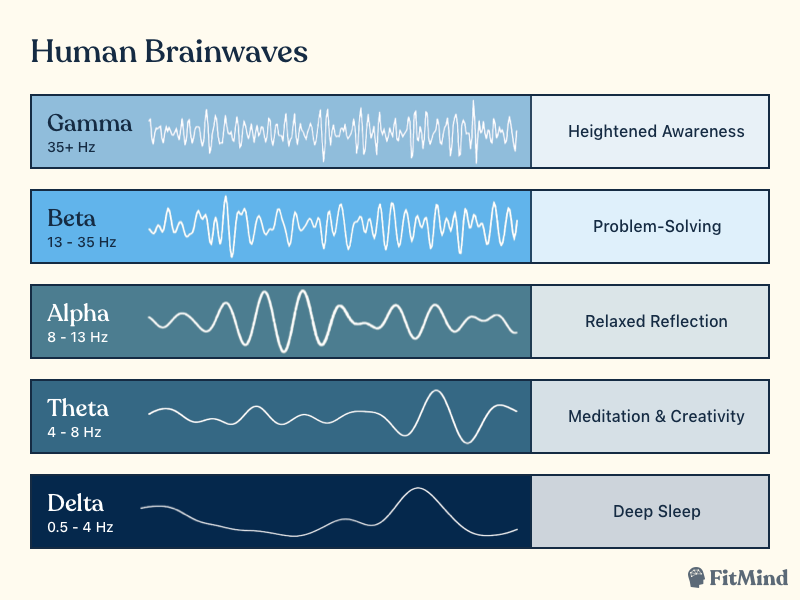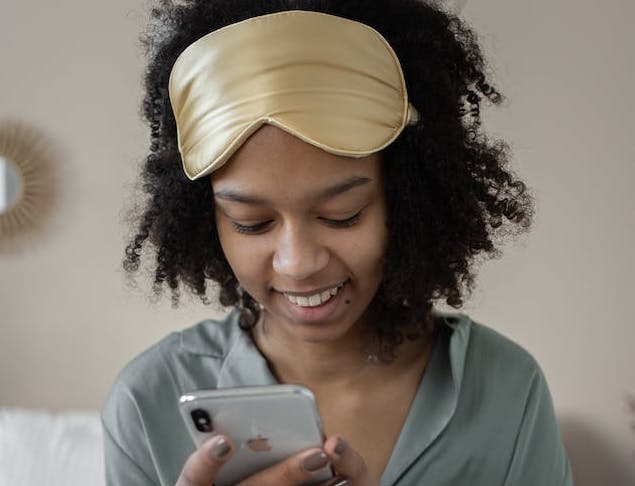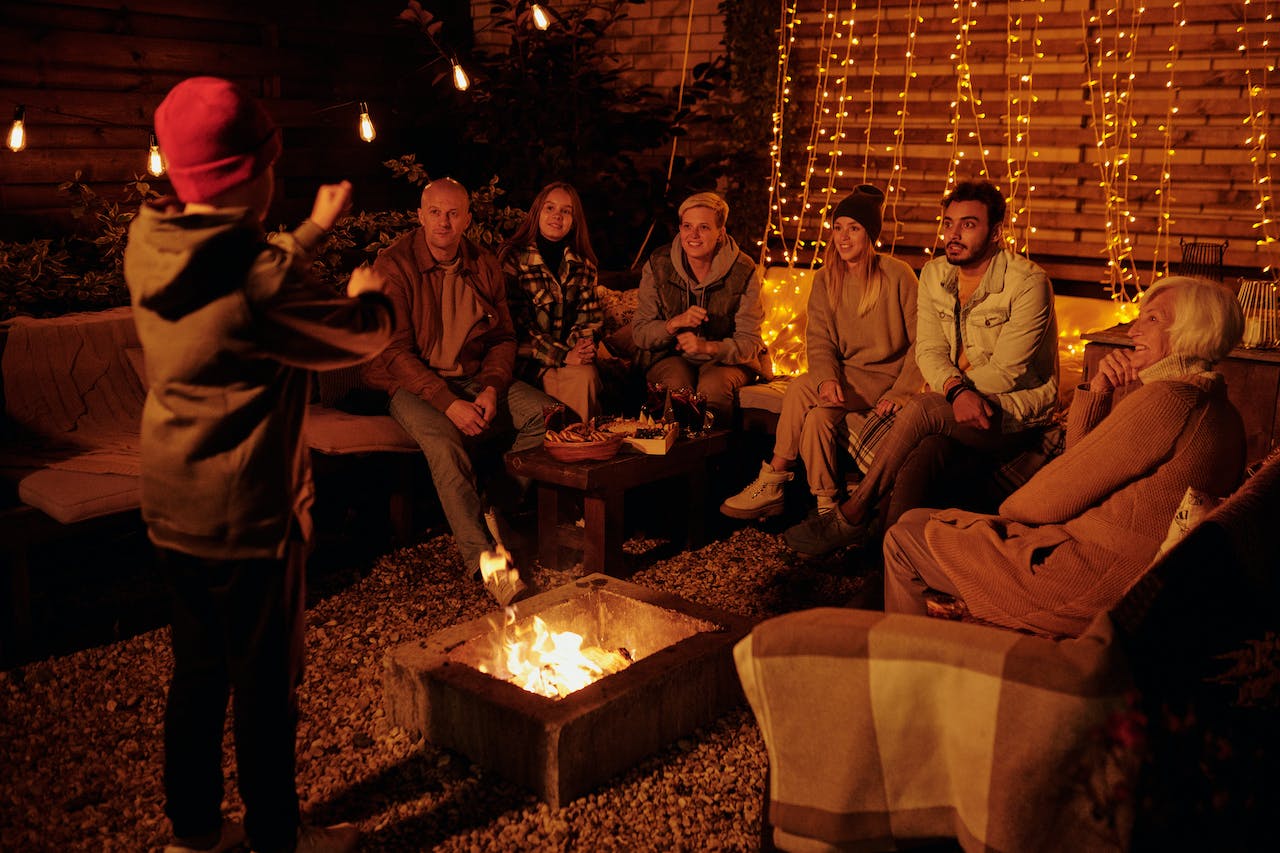Are you one of those people who can’t fall asleep without your bedroom fan on, regardless of the temperature of the room?
Many people prefer the comfort of noise over silence to help lull them to sleep.
However, some sounds are better than others. For example, loud sounds from the television disrupt our sleep – as well as the blue light emitted from the screen.
White noise, on the other hand, isn’t loud or disruptive. It’s soothing and may mask other disruptive sounds, like street noise or noise from other housemates.
The same can be said for pink noise, and there are even white and pink noise apps that bring these soothing sound colors right to your bedroom via your smartphone.
1. Listen to the Rainbow
White noise is the most commonly referenced color noise, containing all frequencies in the sound spectrum equally.
For some, white noise produced by a fan or air conditioner helps drown out other disrupting noises.
The grainy sound of white noise was proven to help people fall asleep 38 percent faster than normal environmental noise.
It’s even been suggested that white noise can help reduce crying in babies, boost work performance, or help improve ADHD symptoms.
White and pink noise offer similar benefits at different frequencies.
Both white and pink noise encompass all frequencies of noise audible to humans, but pink noise has a larger amount of lower frequencies and less high frequencies, making it sound deeper overall.
Wind, falling leaves, or the sound of heartbeats are sometimes labeled as “pink noise.”
Brown noise, sometimes called red noise, emits higher energy at lower frequencies, making it deeper than both pink and white noise.
It’s even been said to help babies fall and stay asleep, as it mimics the sound of being inside of your mother’s womb.
Many white, brown, and pink noise apps are available for free to hear all of the soothing sounds of the rainbow for free right from your smartphone.
Aside from a white, brown, or pink noise app, many sound color playlists are available online, such as this one.
Green noise, on the other hand, usually refers to nature and water sounds that promote the production of delta brain waves tied to deeper sleep.
2. Water/Nature Sounds
There’s a reason you feel at ease while sitting next to a babbling brook or at the shore of the ocean. The sound of running water is rhythmic and relaxing.
According to 2017 research, water sounds shift the nervous system from a stressed, sympathetic state, also called “fight or flight” mode, to a relaxed, parasympathetic state that promotes quality sleep.
The same study also found that soothing sounds (like water and nature sounds) reduce activity in the part of the brain responsible for stress, anxiety, and depression.
Therefore, the sound of rain, ocean waves, or running rivers may reduce the symptoms of mental distress, improving overall mental health.

The same can be said for listening to birdsong. Recent research revealed that birdsong reduces mood and paranoia while boosting cognitive function.
One theory behind why birdsong is so relaxing? Birds don’t chirp if there’s a threat looming – but they seem to chirp often when things are safe!
Aside from the sweet sounds of nature, podcasts provide a comforting sound that many claim helps them fall asleep more quickly.
3. Podcasts and Audiobooks
According to 2019 research, more than 50 percent of 6,000 people surveyed in the U.S. say that they listen to podcasts to relax before bed.
There seem to be podcasts on nearly every topic these days, from educational podcasts to television re-watch podcasts.
Therefore, the type of podcast you choose to listen to may affect your ability to fall asleep.
If you choose a podcast about a soothing topic, it may relax you by distracting you from worries that would otherwise keep you awake.

However, if you select a podcast covering a stimulating topic, it may increase your anxiety before bed rather than decrease it.
Aside from a regular podcast, audiobooks offer a method for slowing down your brain to prepare for deep sleep.
In fact, diving into a story before bed is proven to lead to deeper sleep. Audiobooks provide a hands-free (and light-free) version of reading without any effort required.
Rather than staying up reading a physical book before bed, you can listen to someone else read it for you.
Music offers the same calming effect.
4. Music
Music calms the nervous system, lowering heart rate, blood pressure, and breathing rates.
This counteracts anxious thoughts that lead to sleepless nights, as music is a proven method for stress management.
Recent findings indicate that listening to music at 60 beats per minute causes the brain to sync with the beat, leading to alpha brainwaves that promote relaxation.
Binaural beats may be even more effective than regular music at inducing better sleep.
A binaural beat refers to auditory illusions that occur when you hear two different tones with different frequencies in different ears at the same time.
One study found that binaural beats at a delta frequency of 3 Hz lead to delta activity in the brain, the brainwave phase that leads to deep sleep.
Guided meditations like Non-Sleep Deep Rest (NSDR) provide the same sense of relaxation that music provides.
5. Guided Meditations
Guided meditations that may include following a script, such as body scanning, provide mindfulness practices that are proven to enhance sleep.
With guided meditations, all you have to do is follow the instructions provided.
Non-Sleep Deep Rest, or NSDR, is a more approachable term for guided meditation or “Yoga Nidra” coined by Stanford Neuroscientist Andrew Huberman.
@somnifix Non sleep deep rest, or #NSDR 😴, is a form of #yoganidra that involves #bodyscanning & #guidedmeditation for imrpoved neuroplasticity, sleep, & more! #biohack #hubermanlab #learntok #neuroscience ♬ A Day in My Life - Soft boy
NSDR can be practiced during the day to reset energy levels or before bed to ease into sleep.
There are many guided meditation and NSDR practices available online. Huberman recommends this one by Kamini Desai.
Huberman also has his own 10-minute guided NSDR meditation.
No matter the guided meditation you choose, you may not be able to achieve the deepest sleep possible if you’re breathing incorrectly overnight.
Put the Sound of Snoring to Bed
Whether you choose to listen to the sound of white noise, running water, your favorite audiobook, music, or an NSDR guided meditation to fall asleep, you may not be getting your best sleep yet.
If you breathe inefficiently overnight, your sleep also becomes inefficient. Mouth breathing during rest is associated with poor sleep and snoring.
When we breathe through our mouths, airway tissues collapse and vibrate against one another. The deafening sound of snoring follows, fragmenting sleep.
Mouth breathing leads to overbreathing, placing us in a state of panic. Nasal breathing, however, ensures proper oxygenation and parasympathetic activation.
What’s more, it prevents snoring and efficient rest. But how do you ensure you’re nasal breathing if you’re asleep?
Tape your mouth shut before bed as you put on your favorite sound for better sleep.

This ensures a proper lip seal and tongue posture that guarantees nasal breathing, prevents snoring, and stops mouth breathing in its tracks.
Certain tapes may lead to rashes and irritation. SomniFix is different.
Our strips are latex-free, gluten-free, and hypoallergenic. Our gel-like adhesive provides a seal so comfortable, you’ll forget you’re wearing mouth tape.
Better yet, our patented breathing vent ensures that you have a backup mouth breathing vent to help you become comfortable with the sensation of mouth taping as you sleep.
Drift into better rest fast with your chosen sound – whether it be nature sounds, a pink noise app, or music – just be sure snoring isn’t one of them with the help of SomniFix!





